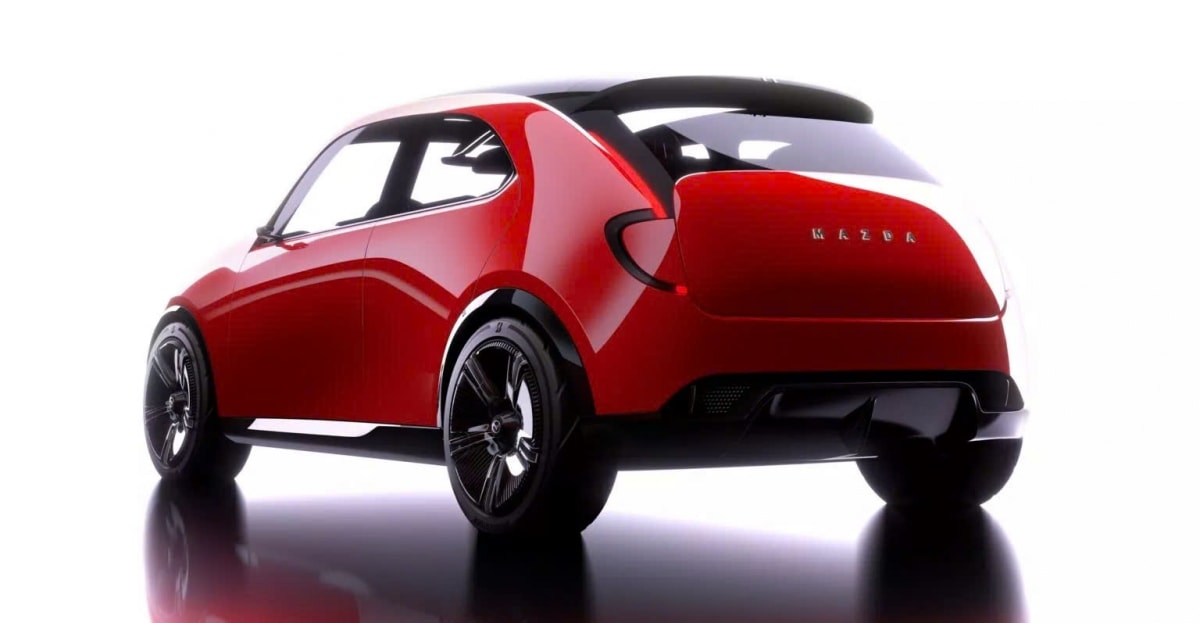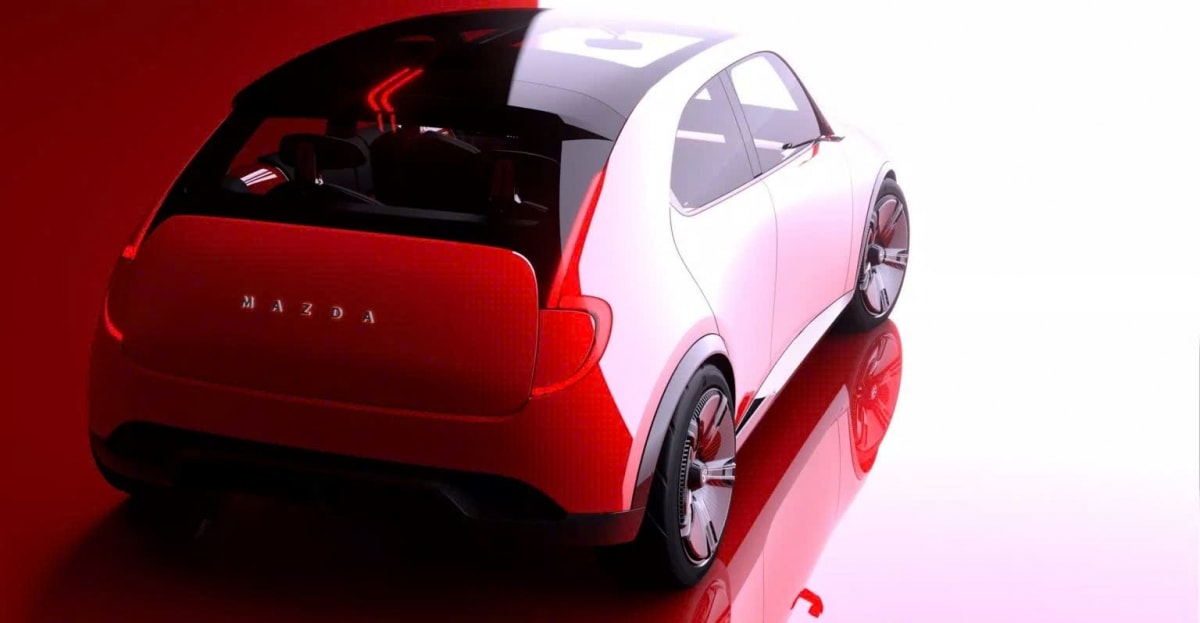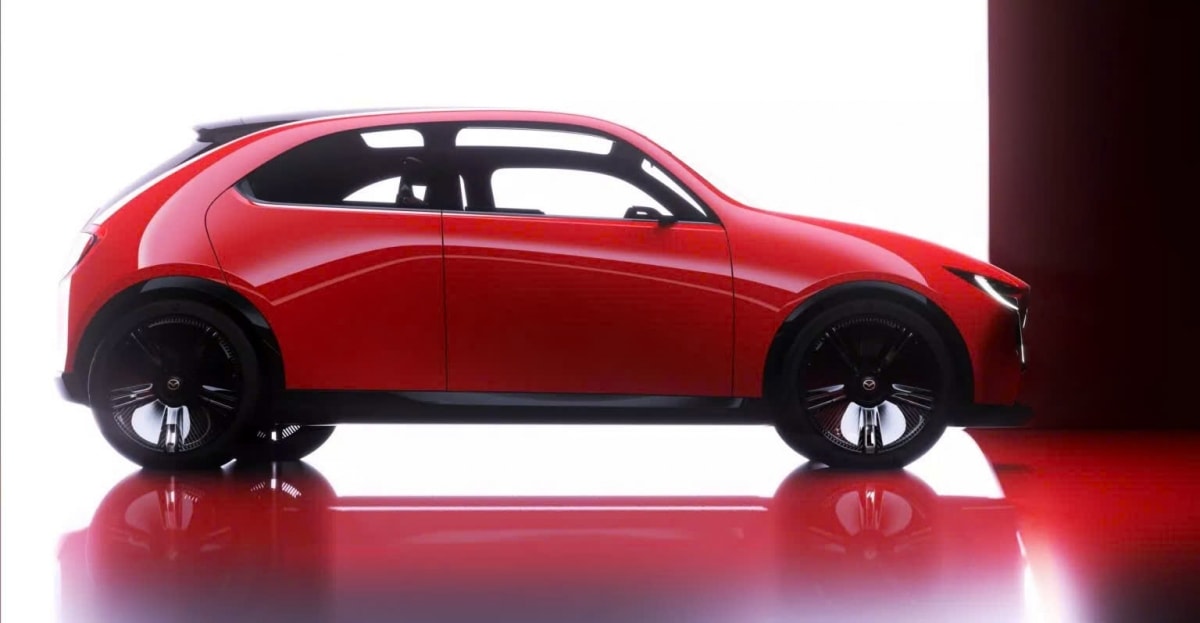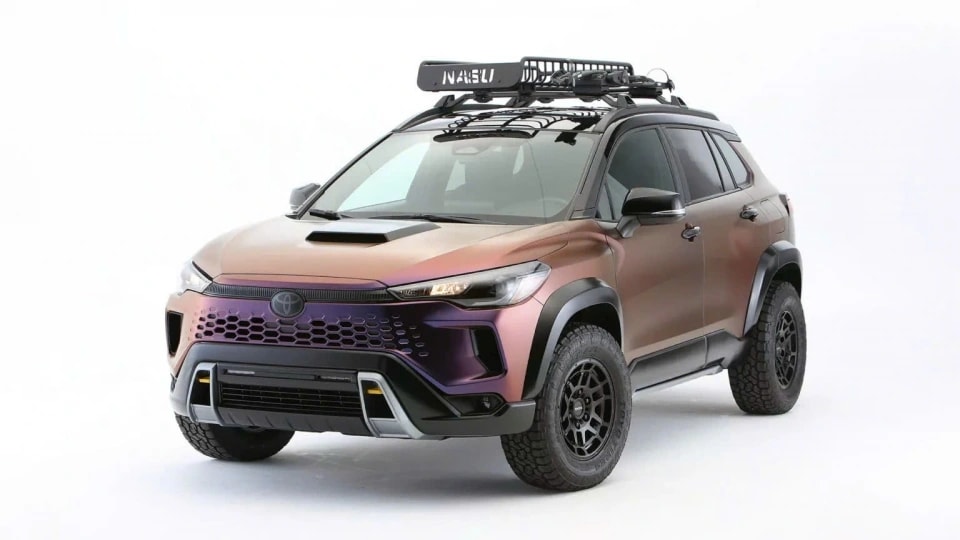Mazda Vision-X Compact concept review: City-car of the future
Mazda's City-car concept at the Japan Mobility Show 2025 attracts attention with its aerodynamic design, compact dimensions of 3,825 x 1,795 x 1,470 mm, minimalist interior without a central screen and empathetic AI system aiming for an emotional connection between driver and car.
Mazda introduced the Vision-X Compact at the Japan Mobility Show 2025 (Japan) as a small city-car concept, reminiscent of a compact version of the Mazda2. The model focuses on two pillars: minimalist, aerodynamic design and a technological vision revolving around empathetic artificial intelligence, emphasizing the emotional relationship between driver and car.
Urban proportions, aerodynamics and Mazda design DNA
The Vision-X Compact features a fully enclosed grille, black bodywork, and aerodynamically optimized wheels. The front features Mazda's signature "fang" LED strip and illuminated Mazda logo. The car uses digital rearview mirrors, a minimalist body, sharp lines, a rounded tail, and a panoramic glass roof that creates a wide-open visual effect.
The dimensions announced by Mazda include: length 3,825 mm, width 1,795 mm, height 1,470 mm; wheelbase 2,515 mm. The concept model is about 255 mm shorter than the Mazda2, suitable for narrow urban settings, while suggesting flexibility in heavy traffic conditions.

Basic size specification table
| Category | Parameter |
|---|---|
| Length x Width x Height | 3,825 x 1,795 x 1,470 mm |
| Wheelbase | 2,515 mm |
| Compared to Mazda2 | About 255 mm shorter |

Minimalist cabin: flat-bottomed steering wheel, round clock and smartphone
The minimalist philosophy continues in the cockpit: flat-bottomed steering wheel, circular digital instrument cluster and no central display. Instead of a large screen, the driver uses his own smartphone. This approach emphasizes the user’s habit of personal connection in a digital context, while ensuring an intuitive interface around the driver.

Empathetic AI: the driver's “companion”
The Vision-X Compact’s technological highlight is its empathetic AI system. Mazda describes it as a “companion” that can converse, suggest routes based on the driver’s mood, or choose silence when the driver wants peace and quiet. The company says it is actively pursuing this approach to create “a real connection between people and vehicles.”
Complementing the empathetic AI is the Human Sensory Digital Model – an effort to digitize the driver’s feelings and respond through the car. Mazda’s vision of “smart mobility” aims for a state where the vehicle understands the context and state of the driver to accompany them more naturally. According to Mazda, “we are not only making a car that performs well, but also making a car that understands you.”

Operational and performance perspectives: what's been announced
Mazda has not yet announced details about the Vision-X Compact’s powertrain or commercialization. At the concept stage, the vehicle’s role is mainly to convey the design direction, human-vehicle interface, and core technology that Mazda pursues in the era of electrification, digitalization, and emotion. Therefore, performance indicators, mileage, or powertrain specifications have not been released at the time of introduction.
In contrast, the Vision-X Compact’s design and technology statements are at the heart of it all: a closed grille, aerodynamic wheels, digital mirrors, illuminated badges, and a minimalist, driver-centric interior. All of it is aimed at reducing visual clutter, increasing the seamlessness of the experience, and laying the foundation for human-car interactions based on emotional data.

Market meaning: small city-car, big ambitions
With its compact dimensions and optimal urban proportions, the Vision-X Compact shows Mazda’s approach to the city-car segment with a technological manifesto. The car’s message – small cities have no limit to big ambitions – is conveyed through the fusion of distinctive design, minimalist cabin and empathetic AI. This is not a list of commercial features, but rather a sketch of the experience Mazda hopes to deliver when the technical and legal conditions allow.
From a user perspective, the use of smartphones as the centerpiece and the emergence of components such as digital rearview mirrors indicate a move toward hardware simplification, increased personalization, and consistency between mobile device usage and in-car operations. Combined with empathetic AI and the Human Sensory Digital Model, Mazda focuses on the driver’s emotions and perceptions, rather than just pursuing performance numbers.

Conclude
The Mazda Vision-X Compact is a concept that is clear in concept: a compact city car, streamlined aerodynamics, a minimalist interior that puts the driver at the center, and a layer of empathetic AI technology to create an emotional connection. While there are no engine specifications or commercial roadmaps yet, the car fulfills its role as a design-technology manifesto, reflecting Mazda’s direction in the context of increasingly deep electrification and digitalization.


